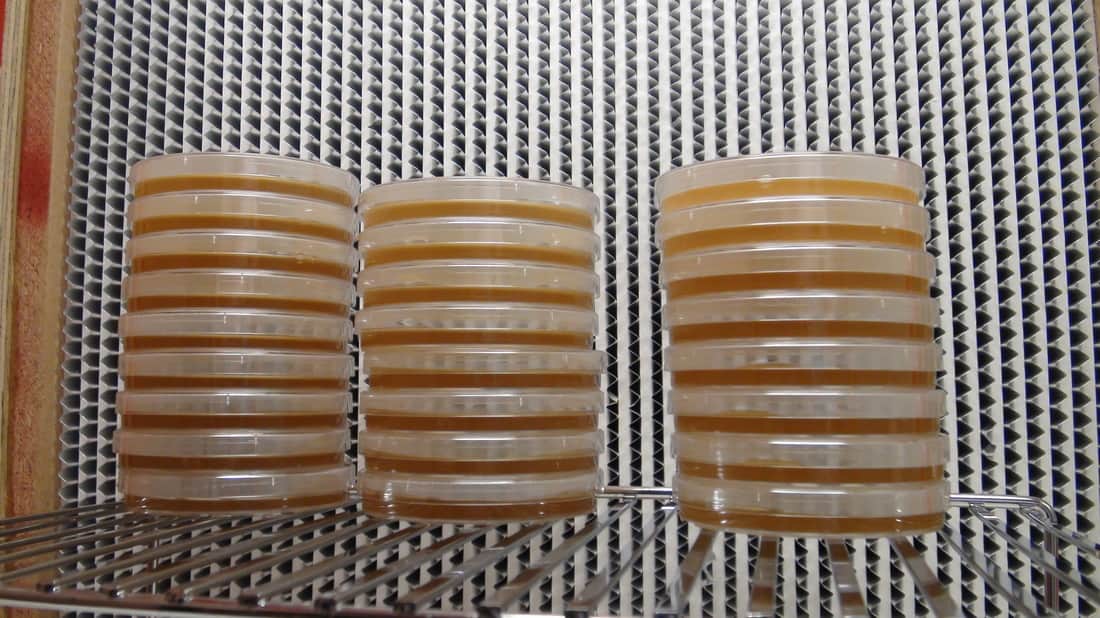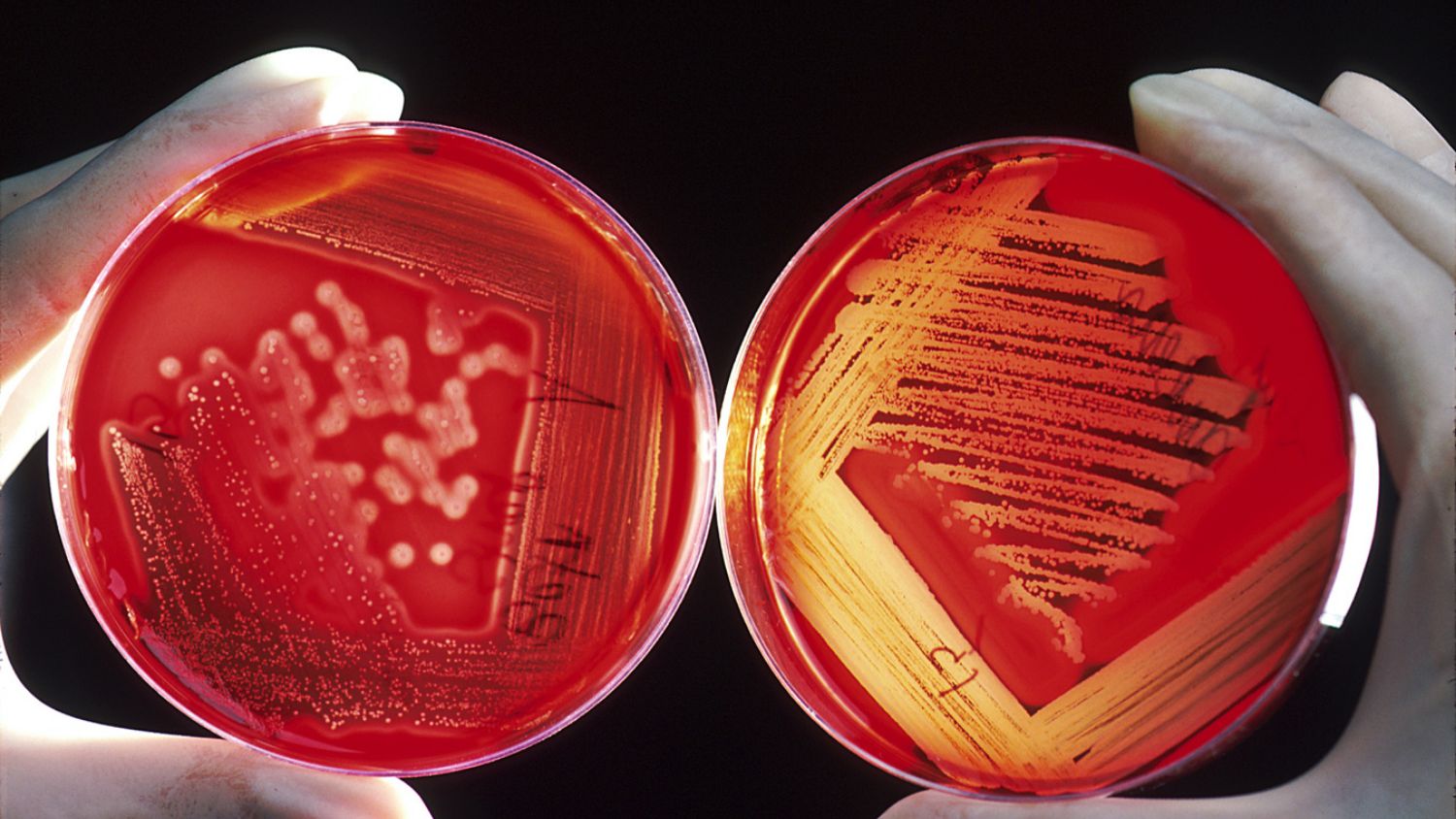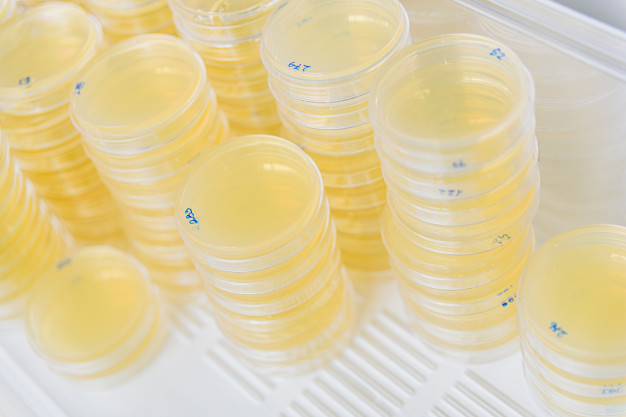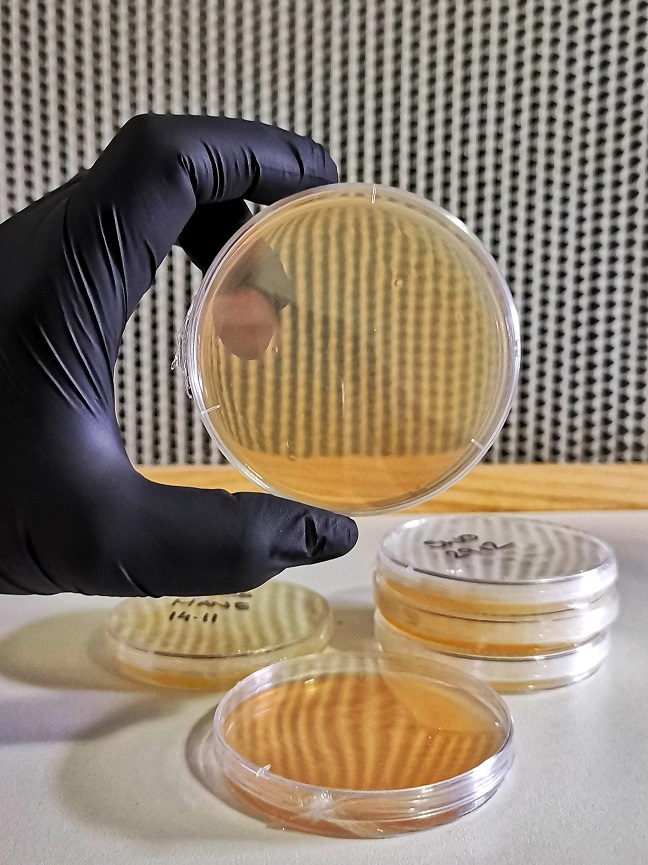Making agar plates, whether they contain LB, M9 or any other medium, is a simple procedure. But there are a few finer points that will kill your experiment, make a mess or just cause you inconvenience if you get them wrong. So let’s put on the record exactly how to make the perfect agar plate.
Follow this and you’ll get great plates – with no lumps, bubbles or excess moisture – every time.
1. Make up the medium according to the recipe, then add the desired amount of agar (normally about 1% w/v) and stir
If you autoclave without stirring, with the argarose still floating on top of the liquid, you get an agarose cake in the medium. Interesting, but useless
2. Autoclave for 25 minutes
After autoclaving you can of course store the medium-agar mix in a toughened glass bottle then melt it in a microwave or water bath when needed. Make sure you use toughened glass bottles, or this (see #2) can happen
3. Cool the medium-agar mix to 55°C. For routinely consistent results, do the cooling for a couple of hours in a 55°C water bath
Agar starts to solidify at about 50°C. Using the water bath means you can consistently cool the mixture to just above the solidification temperature. Before I used a waterbath, I used to just cool it in air but would inevitably forget about it and come back to find solidification had already started — lumpy plates are no good for spreading!
4. Add any antibiotics or supplements
You can be confident that the agar is at a suitable temperature because you have cooled it in the water bath
5. Pour the plates. Use about 30 mL for each plate in a 100mm diameter plate
The less agar-medium mix in each plate, the more easily they will dry out. 30 mL is a good amount for long term storage, 10-20 mL is fine if you are going to use the plates relatively soon. For consistency, I’d recommend using a serological pipette. Suck up 2-3 mLs more than you need to minimise blowing bubbles into the plate.
6. Allow the plates to set. If there are any bubbles in the plates, briefly pass the flame over to pop them.
Classic error: trying to move the plates before the set is just asking for trouble. Just leave them alone!
7. Dry the plates in the laminar flow hood with the lid slightly off for 30 minutes (or in a 37°C incubator for 2-3 hours, or RT for 2-3 days).
Drying the plate is very important for storing the plates and growing colonies on them. If you don’t dry them, the moisture will evaporate and condense on the lid during storage or during incubation and give you horrible wet plates to work with. At worst the moisture can affect the plating of your cells. Use a timer to remind you when the 30 minutes is up as – in my experience – it is very easy to forget about your plates and come back to find your plates have turned into agar crisps/chips. Tasty.
8. Use the plates immediately or seal them. You can use Parafilm, or in the bag that the plates came in. Store the plates at 4°C
A quick way to label your plates is to have a color code for each antibiotic and medium type you tend to use (e.g. red for ampicillin, black for kanamycin, green for LB, blue for M9 etc). Stack the plates and use the appropriately colored lab marker to draw a line down the whole stack. Make sure you keep the color code to hand though.
Now you should have perfect plates every time. If you’ve got any further ideas or additions to this protocol, please leave a comment.s
.png)
.png)



